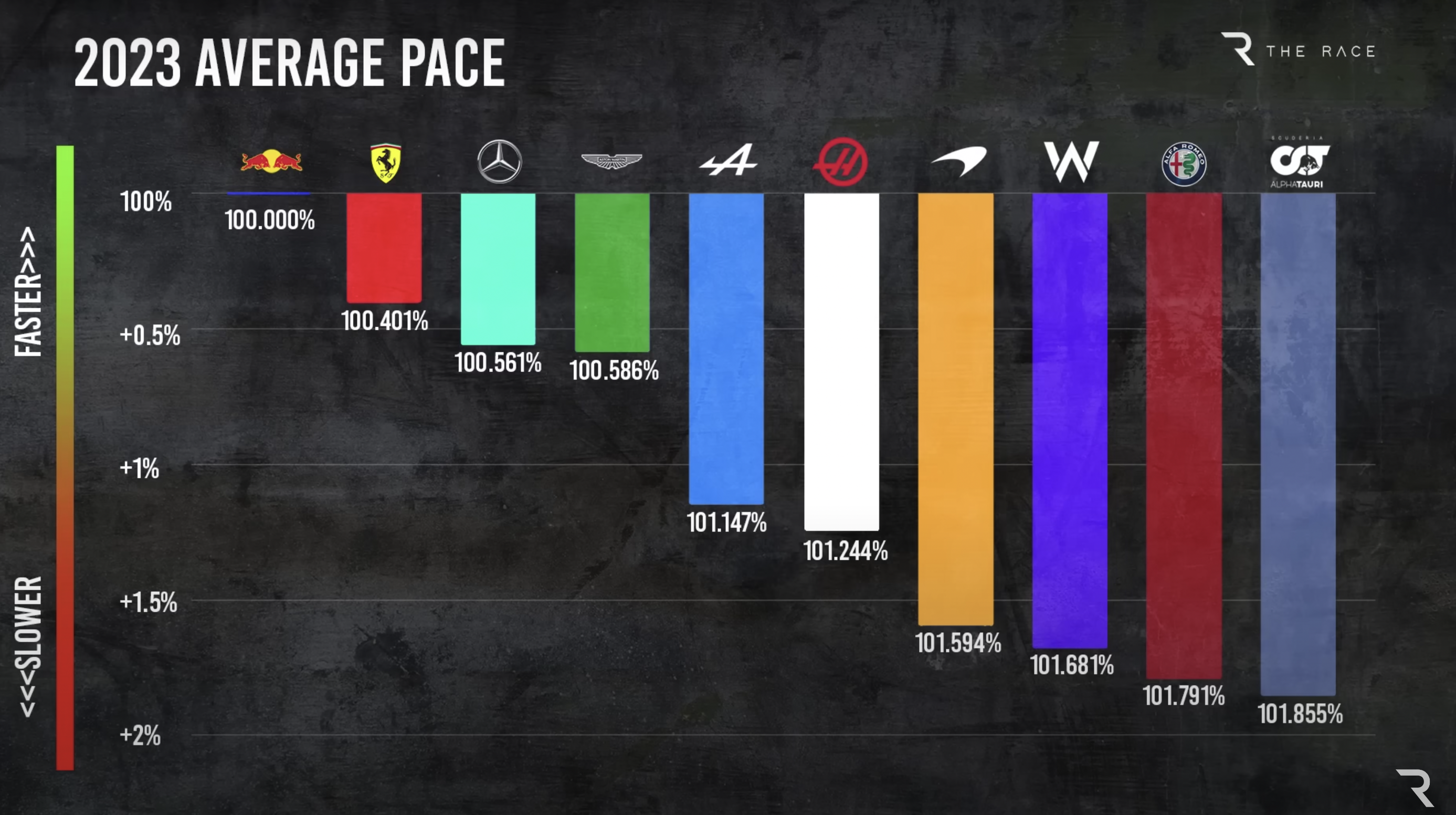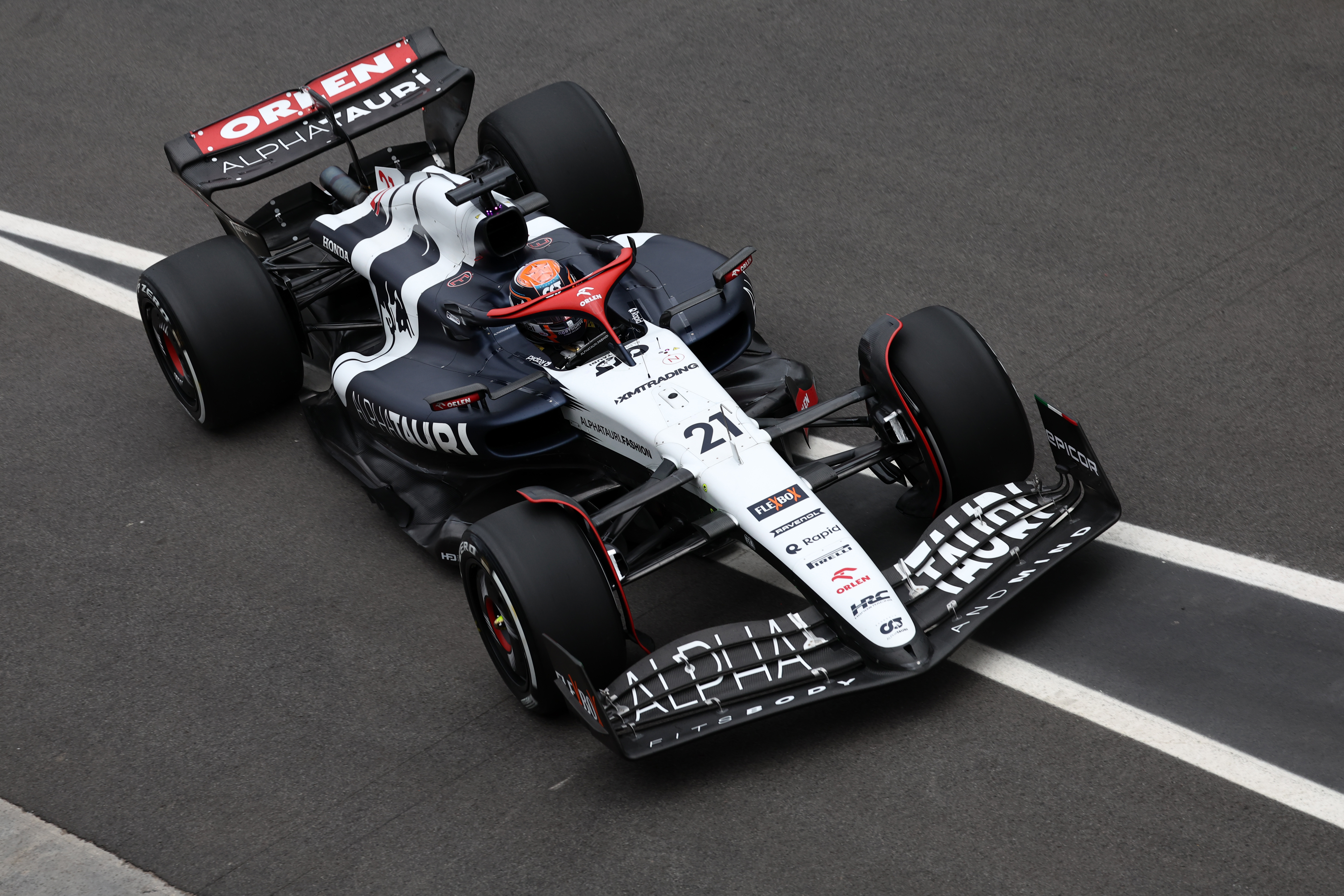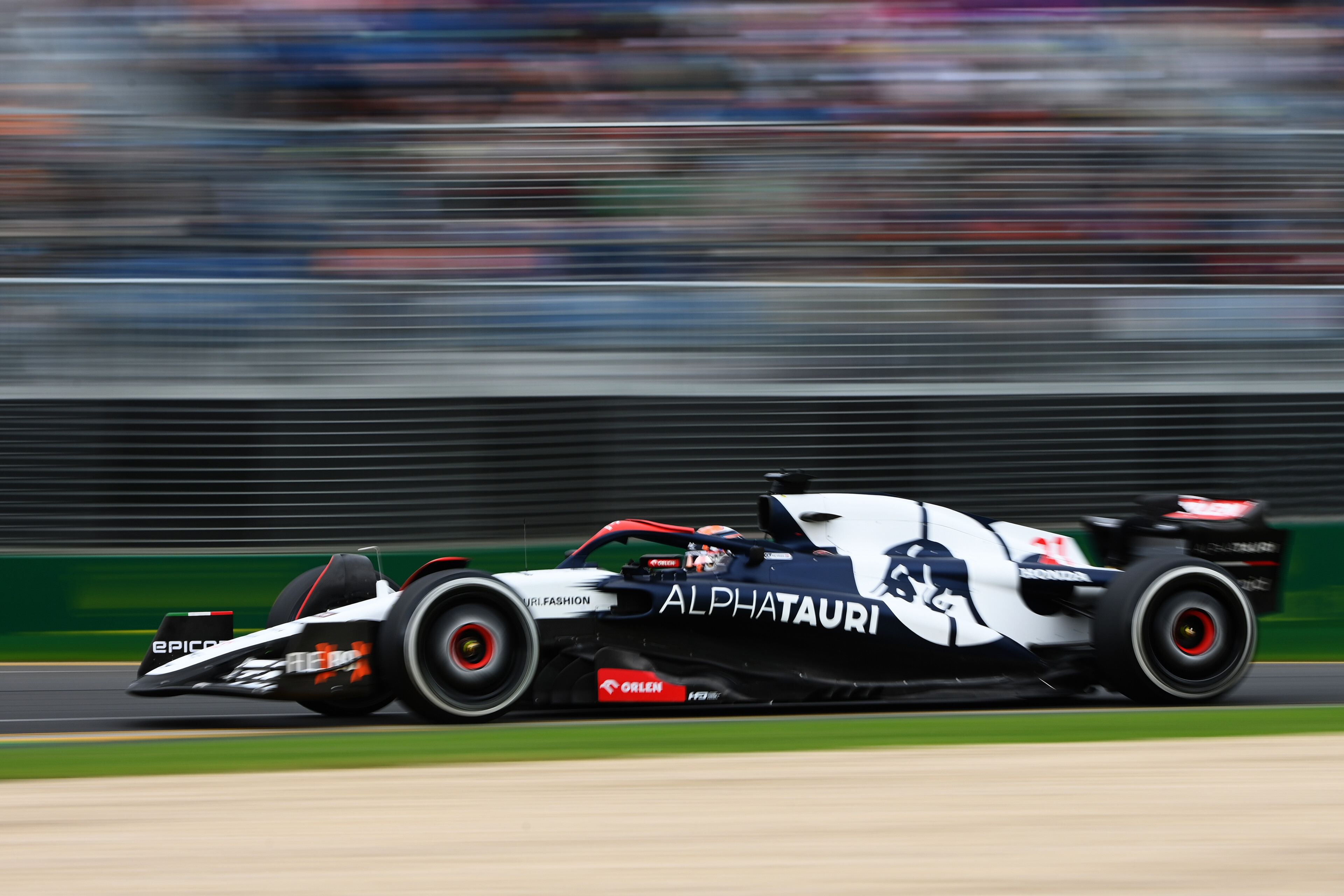One of Red Bull’s Formula 1 teams has built inarguably the best car on the 2023 grid, while the other one is in a fight to avoid being last.
Yuki Tsunoda’s solitary point in Melbourne brought AlphaTauri level with Williams for ninth in the championship but that was assisted by late-race chaos and so far it is the only team that could be argued has not finished in the top 10 on merit.
AlphaTauri has not had the slowest car in qualifying at any individual event, with Williams and Alfa Romeo trading that position, but it is fractionally the slowest on average from the first three events.

And while others have had encouraging peaks in the midfield, AlphaTauri has been disappointingly consistent, relying on Tsunoda to overachieve to get anywhere near the top 10 in the races, while his new team-mate Nyck de Vries has not come close to troubling the scorers and has been eliminated from Q1 twice.
The AT04 has started the season generally poor on the brakes, suffering with understeer, and looked low on straightline speed. But its biggest weakness is a carry-over from last year.
AlphaTauri has admitted it missed some of its targets with the development of the 2023 car and is still in the process of catching up the deficit, primarily to improve the performance of the floor at higher rear ride heights.
This is seen to be the key weakness of the 2023 car. Low-speed aero performance is one of the targets AlphaTauri missed in pre-season and the team is seeking to improve its low-speed entry stability because the current characteristics trigger instability and require the drivers to be more conservative on entry.
“Obviously low speed aero performance is a target in every team,” says AlphaTauri technical director Jody Egginton.
“And that’s one of the targets we didn’t quite nail pre-season. The updates we’re bringing now, amongst some other things they’re intended to improve low-speed entry stability.
“We’re looking to make the car more stable on low-speed entry into corners. So then the drivers can push harder at late entry, and there’s performance to come from that.

“[To do that] we were looking to improve rear load at high rear ride heights.
“It’s the load drop-off of these ride heights at the moment which causes our instability.
“If we’ve improved the rear load on the entry phase, if you’ve got more rear load, you’ve got more stability.
“And we’re working on trying to carry that further into the corner, so that the driver can push harder towards late entry apex.”
The floor upgrade seen in Australia is a key part of the plan and the first of what Egginton says will be “five or six” steps in floor development this year.
The floor was re-profiled at the front, with various details like the ‘cheese-wire’ removed from the launch specification, and has been reworked at the rear as well.
The upgrades already showed positive signs in Melbourne, where AlphaTauri was a bit more competitive over one lap than in the first two races.
AlphaTauri inadvertently had a back-to-back test with the old and new specifications of floor because Tsunoda damaged his new one beyond economical repair with an off in Friday practice.
The changes have allowed the drivers to start to push harder, with a higher apex speed, instead of constantly bleeding laptime in these key corners, and Tsunoda reckoned it was worth up to two tenths of a second – although it is worth noting that the Albert Park layout, revised in 2022, has very few low-speed corners.

These upgrades are primarily the result of work AlphaTauri was already doing before the car ran on track in testing and the opening races, a reflection of the reality of long lead times in F1.
However, the on-track running only served to give AlphaTauri more detail about where it needed development, which is consistent with the team missing its targets and having more improvements in the works already.
It has encouraged AlphaTauri to see the upgrades start to improve the weaknesses encountered at the first couple of races, because it helps validate the development path it was already on, which is now being informed by all the data the team is getting trackside.
“It works on a large part of the things that we’d identified as possible weaknesses when we were developing the car over the winter,” says Egginton.
“We set ourselves targets for aero development and other aspects, we achieved some of those targets and didn’t achieve others. This update goes some way to addressing that.
“We started work on this package before we’d run the car. And it does provide the advantage we need, all the benefits we need, in the areas we’ve proven we’ve got to work on.
“It’s the first step, there’s a lot more to come. But it is delivering in the areas where we think we’ve got to make the biggest gains to get closer to our rivals.”

The fact this is just the first of what sounds like a prolific run of floor updates tells us two things.
It reinforces just how much progress the team needs to make in this area based on the evidence of the early races.
And it shows how much of an aggressive upgrade plan AlphaTauri has, which means it should deliver on a key promise from last year to improve in this area, as it struggled to keep up with its aerodynamic development while managing the budget cap.
Whether the quantity of upgrades is matched by the quality, though, will determine whether AlphaTauri makes a big step in the midfield or continues to provide a vexing contrast with Red Bull’s other team, which is currently dominating F1 at the front.




